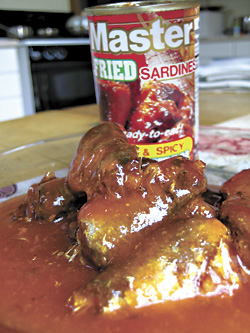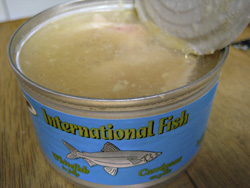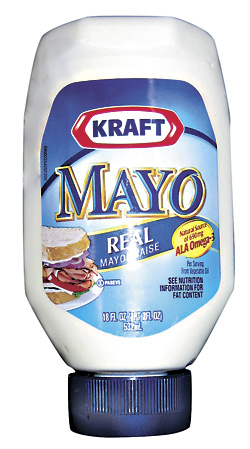Normally, the logic of healthy fisheries management goes something like this: Keep the big ones, toss back the small fry.
Logical, right? That way, not only do we eaters get thicker tuna steaks and fleshier salmon, but the fish population also gets a chance to replenish itself as the younger fish mature.
It turns out, though, that nothing could be further from the truth.
For decades scientists have riddled over the fact that heavily harvested fish species—tuna, sardines, salmon—fluctuate in size more radically than, say, the lungfish. In our era of aggressive commercial fishing, these sorts of fluctuations—with many fish populations having been reduced by as much as 90 percent—mean not only extinction for some fish species, but also economic ruin for the companies that harvest them.
So it was that a team of researchers from Scripps Institution of Oceanography inspected five decades’ worth of data, comparing the tasty (tuna, sardines, etc.) to the nasty (mudfish).
They found that by only harvesting large fish, fishermen create immature fish populations. These “juvenescent” populations are unstable and often mature early to adapt to their new environment. Worse yet, they’re also apt to undergo quick—and irreversible—genetic adaptations to their new environment.
In other words, if we keep overfishing the adult populations, we may end up eating cans of pickled jellyfish, instead of, say, a mature tin of Master Fried Sardines Hot & Spicy Pulutan.
Then again, having sampled a fillet or two of Master Fried Sardines, a future of pickled ambergris doesn’t sound so bad. Canned in Manila and shipped over water and on road, Master Sardines arrive in a diminutive cylinder more reminiscent of tomato paste than of a seaside platter of fried sardines.
Now, don’t get me wrong. I love sardines, grilled, fried, or canned (in that order). Still, I must say that the notion of canned fried food—even sardines—instead of enhancing their appeal, acts as a sort of digestus interruptus multiplier. But even though these sardines are putrid, it’s the Master sauce that is the real deal-breaker here.
The can says its contents are hot and spicy. That may be true, but the packaging fails to mention that its glutinous sauce is equally sweet—La Choy Chicken Sweet & Sour sweet, that is. Combine that with a generous dose of chili peppers and a very fishy chunk of distantly fried sardine, and the result is—well, let’s just say Ben and Jerry won’t be coming out with a Master Fried Ice Cream flavor any time soon.
At first the sauce swings wildly at your tongue with a blunt and unstructured blow of sweetness. It follows that with a quick jab of spice. Then, just as your poor tongue is finding its legs, Master wallops you with a stinky sardine kidney blow.
It’s a culinary TKO, and I can guarantee that no comer will be wanting a rematch. Which isn’t so bad, if we’re wanting to save the sardines.








